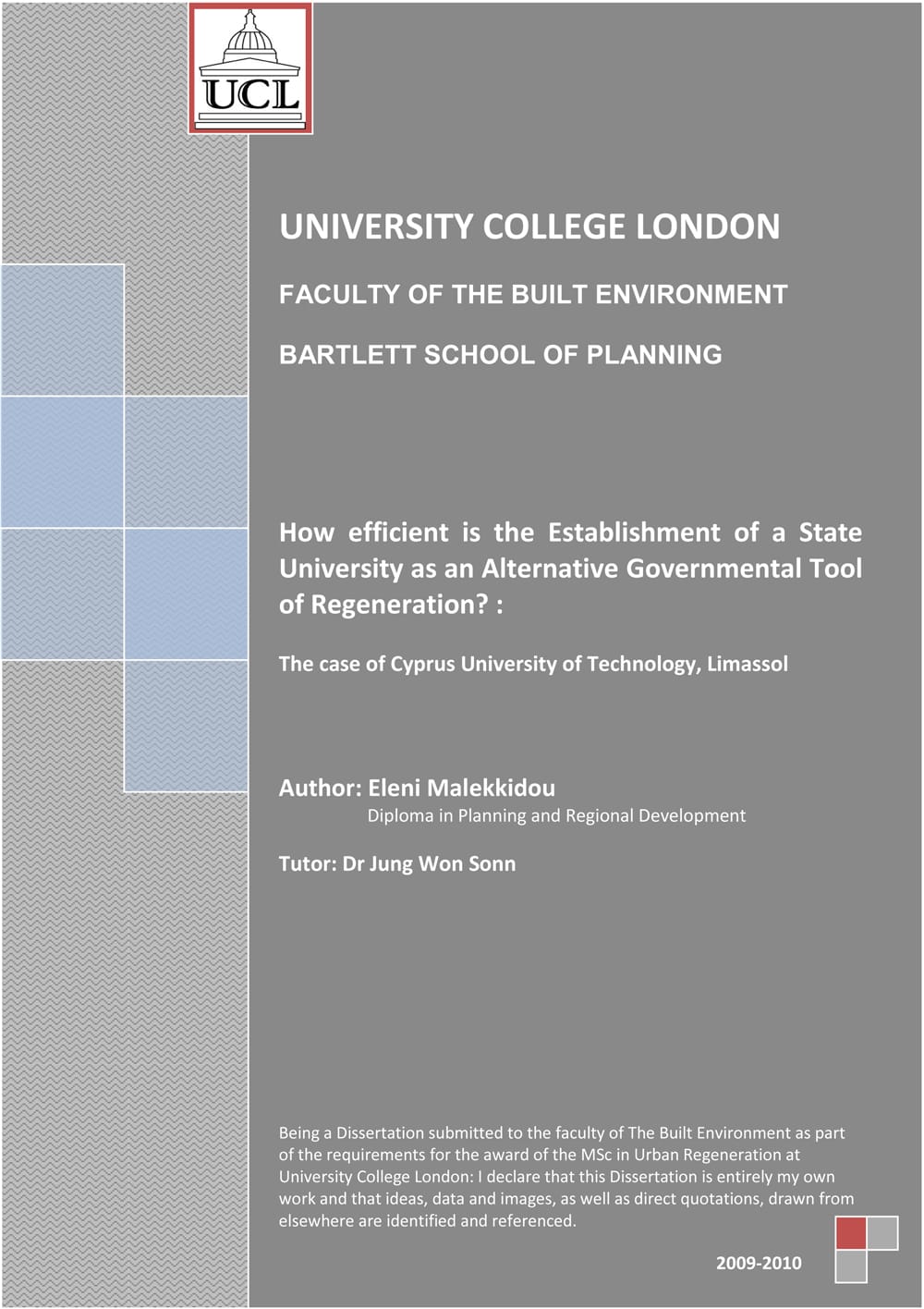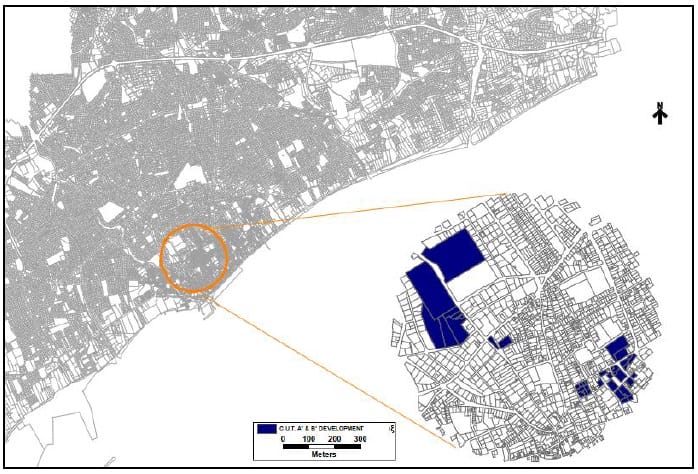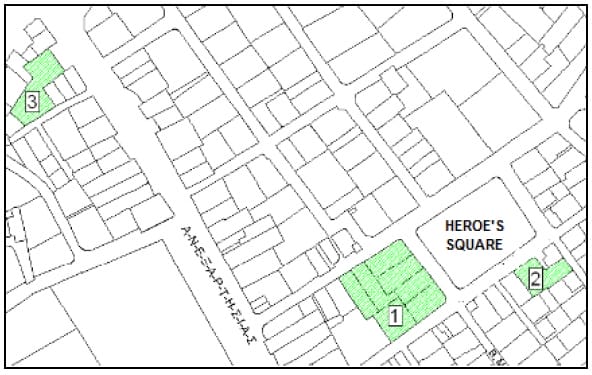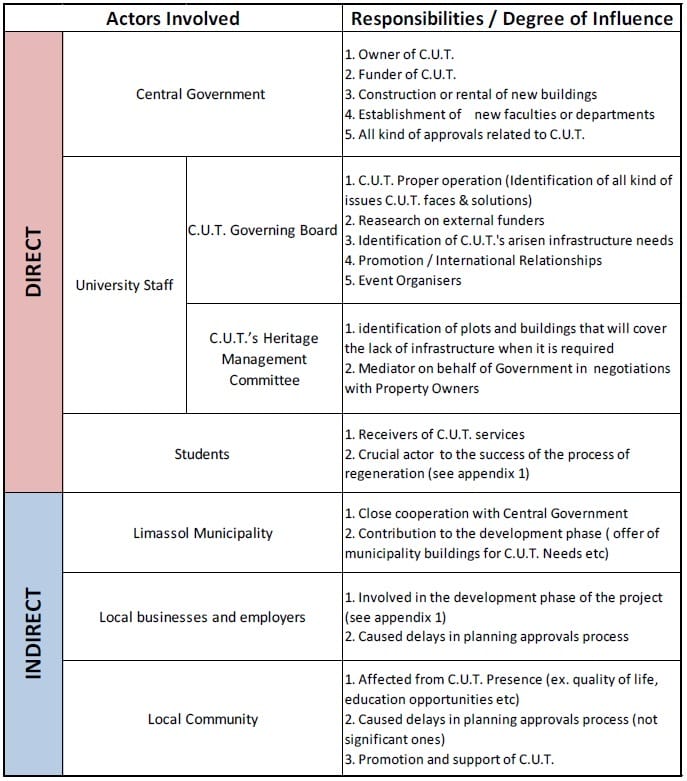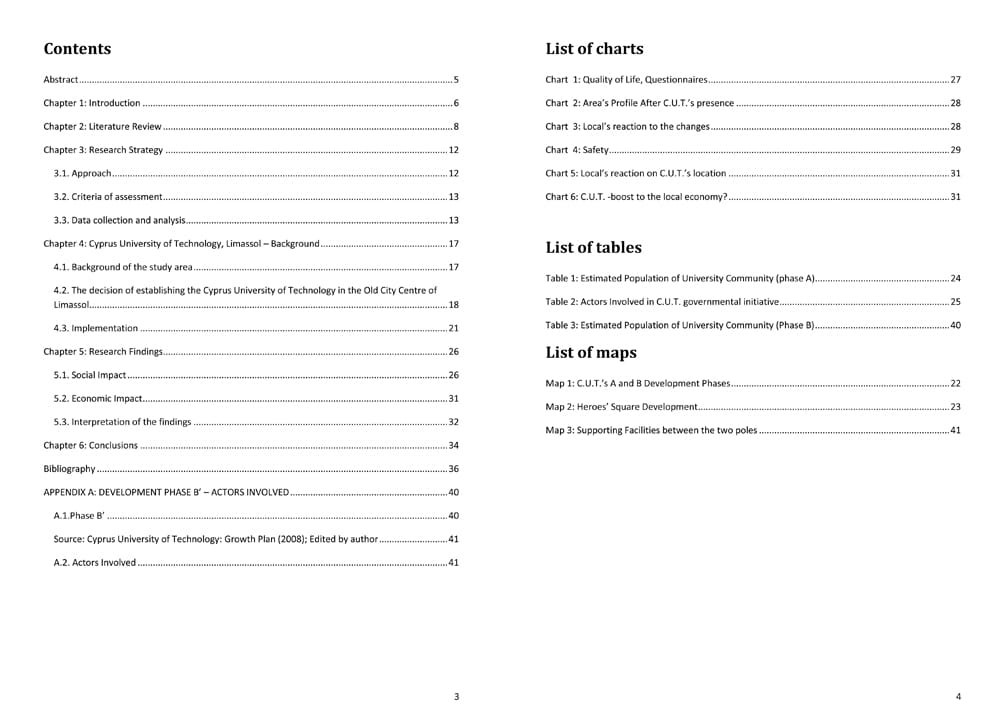HOW EFFICIENT IS THE ESTABLISHMENT OF A STATE UNIVERSITY AS AN ALTERNATIVE GOVERNMENTAL TOOL OF REGENERATION? The case of Cyprus University of Technology, Limassol
ΕΛΕΝΗ ΜΑΛΕΚΚΙΔΟΥ
2010 | Faculty of the Built Environment – University College London
Μεταπτυχιακή Ερευνητική Εργασία | Επιβλέπων: Dr Jung Won Sonn
ABSTRACT
Taking into account that the existing literature on governmental regeneration policies and strategies is cultural oriented as there is a focus on the provision of cultural services; this paper examines the efficiency of the establishment of a State University as an alternative governmental tool of regeneration. To begin with, it attempts to describe and understand firstly; how other researchers have examined various regeneration policies and secondly; how they assessed the socioeconomic impacts of various Universities in the area that are located. Basically, it analyses different aspects and parameters that had been taken into account in formulating the argument of this thesis. Secondly, it combines the findings of the above and develops the argument that the provision of cultural services to deprived areas, in order to stimulate socioeconomic or physical regeneration, is a contemporary trend that European Governments use frequently, not always successfully, and supports that public educational institutions and particularly, the establishment of a State University can act as an efficient alternative lever of regenerating a deprived area. In order to prove and clarify all the aspects of this statement, a case study is selected. Particularly, Limassol historic city centre and the identified socioeconomic and physical transformations related with the establishment of Cyprus University of Technology are analysed.
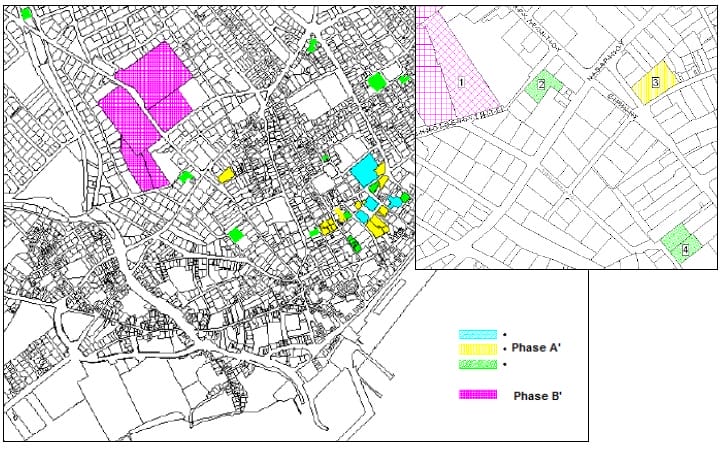
Map 3: Supporting Facilities between the two poles, Source: Cyprus University of Technology: Growth Plan (2008); Edited by author
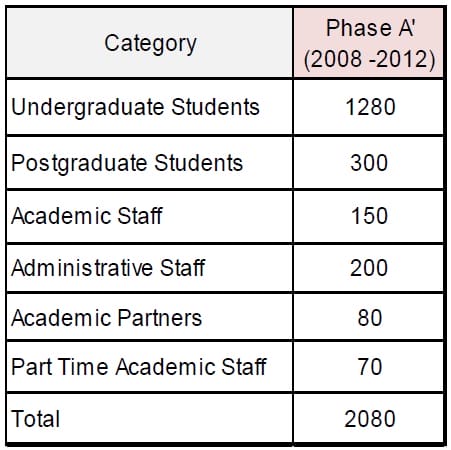
Table 1: Estimated Population of University Community (phase A), Source: Traffic Impact Study, 2007; Table created by author
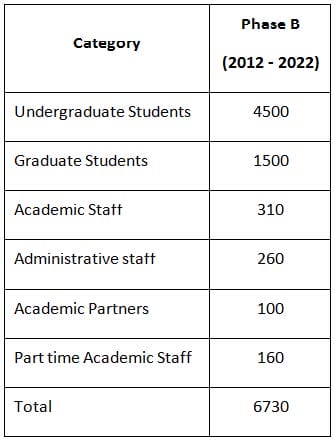
Table 3: Estimated Population of University Community (Phase B), Source: Traffic Impact Study, 2007; Created by author

Questionnaires: Area’s Profile After C.U.T.’s presence_ Local’s reaction to the changes, Charts created by author

Questionnaires: Local’s reaction on C.U.T.’s location_ C.U.T. – boost to the local economy?, Charts created by author



